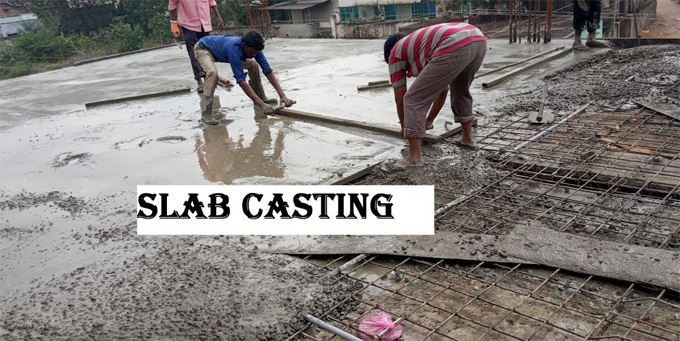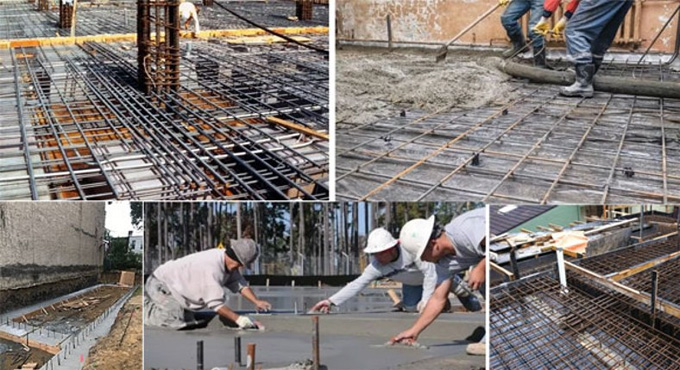
Everything you must know about RCC Slab Casting

The concrete slabs are responsible for transferring the loads to the ground. The reinforced concrete slabs have been used by the construction professionals to construct the roofs, floors and ceiling of the building structure.

The reinforced concrete slabs act as the flexural member in the construction structure. The casting of the RCC slabs refers to the process of manufacturing large concrete slabs. The RCC slab casting procedure helps to ensure that the slab will achieve long-term strength and durability.
Discuss the materials that have been used in RCC slab casting
Numerous materials have been used to construct the RCC slabs, which are as follows:
Concrete
This is one of the important materials of RCC slab casting, which has been made with the mixture of cement, water, aggregates and other types of additives. In this context, the proportion of each of the components depends upon the purpose and strength of the slab.
Reinforced steel
The reinforcement steel is another important component of the RCC slabs, which is responsible for providing tensile strength and support to the RCC slabs. With the help of the reinforced steel, the concrete slab acquires additional strength, which helps to prevent cracking or any kind of damage in the slab.
Other materials
The formwork for the concrete slabs has been made from steel, wood or other materials, which acts as the mould for the concrete during the concrete pouring and curing process. A release agent has been used to prevent the concrete from sticking to the formwork.
Machinery for RCC slab casting
The machinery that has been used for the casting of the reinforced concrete slabs is as follows:
1. Batching plant
2. Transit mixer
3. Vibrators
4. Chute and CI Pipes
5. Concrete pump
6. Slump tray
7. Slump cone and associated tools
8. Shovel
9. Rubber hammer
10. Power float machine
Procedure for casting a reinforced concrete slab
The process of casting the reinforced concrete slab is a complex process and can also be challenging.
Preparation for the construction site
In the first step of casting the RCC slabs, the construction site should be levelled and compacted before beginning the construction work. This process helps to ensure that the foundation of the RCC slabs is strong enough to resist the weight of the entire slab. If any kind of obstructions are present, excavation of the ground is necessary.
Building the formwork
After preparing the construction site, the formwork for the concrete should be built. The formwork helps to hold the concrete in place. The formwork should be constructed to the precise dimensions of the slabs and also have to be strong enough to hold the concrete. The formwork of the concrete can be made with steel, wood or aluminium.
Reinforcing slab
The reinforcement bars have been laid within the formwork before pouring the concrete. These reinforcement bars help to provide strength and durability to the slab.
Providing the construction joint
Before starting the concreting process, the construction joint should be pre-decided. In this conext, two construction joints should be pre-decided and the location plan of the construction joint should be at the one-third span.
Preparing concrete
In this stage, it has been ensured that all stock of material is sufficient to start concreting. In addition, all plants and machinery should also be checked in the working conditions.
Pouring the concrete
After confirming that the formwork and reinforcement are in place, the concrete mix has been poured. In this context, the concrete mix should be prepared carefully to ensure its strength and durability standards. After pouring the concrete in the formwork, it has been spread evenly, which helps to avoid any kind of air pockets or weak spots in the concrete.
Finished the concrete surface
After pouring the concrete, a trowel is used to smooth and level the concrete, which helps to achieve a smooth surface. The concrete surface should be textured and polished depending upon the desired finish.
Curing process
Proper curing should be done of the concrete after the set of the concrete. To prevent the moisture evaporation from the concrete during its hardening time, a plastic or hessian cloth can be used to cover the concrete surface. This process helps to minimise shrinkage and cracks. The curing process of the concrete slabs should be done by ponding and stacking water for at least 7 days.
Key factors that need to be considered for RCC slab casting
1. The formwork of the RCC slabs should be inspected and prepared properly. It has to be ensured that the formwork is sturdy, has adequate support and proper alignment.
To learn more, watch the following video tutorial.
Video Source: DND Construction
2. The construction professionals, who are involved in the RCC slab casting procedure, should ensure the proper placement of the steel or mesh in the concrete on the basis of the design specifications.
3. The quality of the concrete mix, including mix proportions and its consistency, should be examined properly. In addition, the continuous pouring of the concrete into the formwork also needs to be ensured to avoid cold joints.
4. The ideal concrete curing condition should be maintained by covering slabs. To prevent premature drying or cracking in the concrete, the expert should also use wet burlap or sprinkle water on the concrete slab.
5. Regular inspection of the RSS slabs should be done during and after the RCC slab casting process.


